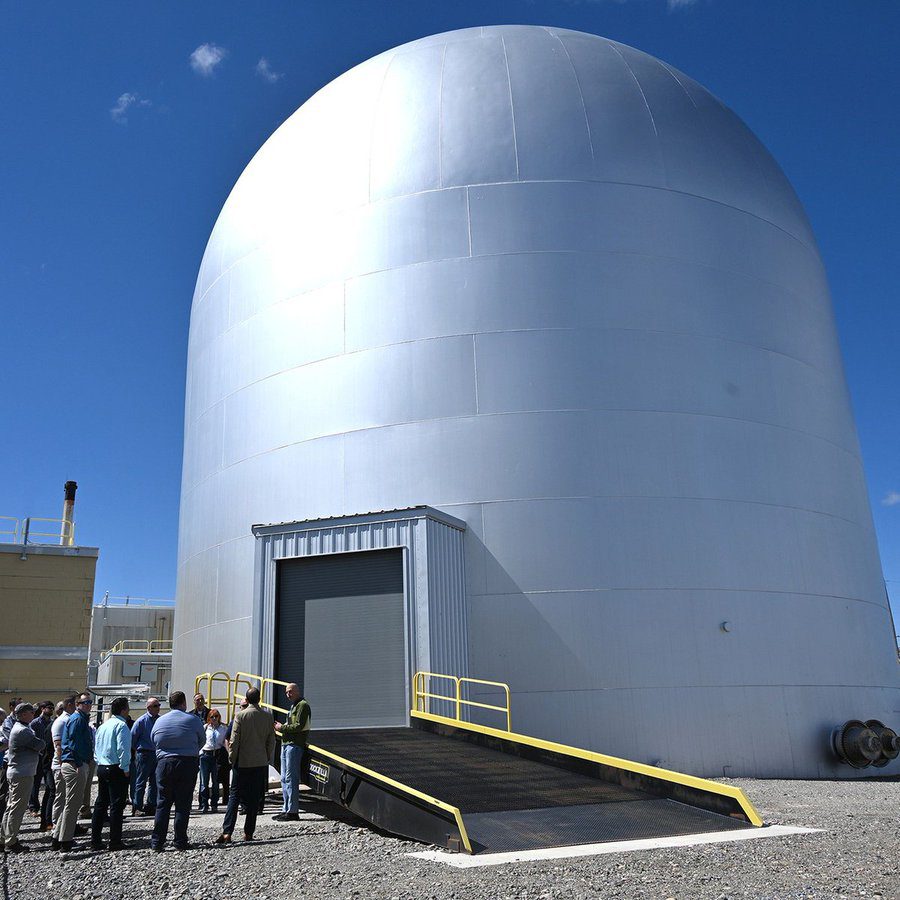

Patel reported in mid-November 2024 that Westinghouse and Radiant Industries have secured a $5 million Department of Energy (DOE) award to advance their microreactor designs for testing at the Demonstration of Microreactor Experiments (DOME) testbed at Idaho National Laboratory (INL)— the world’s first facility, specifically designed to support fueled reactor experiments for advanced nuclear technologies.

The two companies, along with Ultra Safe Nuclear Corp. (USNC), received a combined $3.9 million in October 2023 as part of the DOE’s initial funding round to advance their microreactor designs through a front-end engineering and experiment design (FEEED) process. The second round of funding, a combined $5 million, announced on Nov. 18, builds on that progress, allowing Westinghouse and Radiant to enter the detailed engineering and experiment planning (DEEP) phase, which includes completing a Preliminary Documented Safety Analysis (PDSA)—a critical step before reactor fabrication and testing, the DOE said.
First Experiment at DOME Could Begin in 2026
DOME, one of two new testbeds being developed for fueled reactor tests at INL, is designed to provide infrastructure for industry to test their concepts and generate data to support design verification and licensing activities, the DOE has told POWER. Managed by the DOE’s National Reactor Innovation Center (NRIC), the facility repurposes the iconic Experimental Breeder Reactor-II (EBR-II) containment structure. The 80-foot-tall steel-and-concrete dome is being retrofitted with upgraded electrical, mechanical, and HVAC systems to host microreactors of up to 20 MWth, including those using high-assay low-enriched uranium (HALEU) fuels. (The 20-MWth energy limit allows the DOE to classify the testbed as a Hazard Category 2 nuclear facility.) Already midway through construction, the first fueled reactor experiment could begin in 2026, the DOE said on Monday.
The DOE’s National Reactor Innovation Center (NRIC) has since 2021 set out to refurbish EBR II (which operated from 1964 – 1994) as a new test bed for higher thermal power reactor projects. The Demonstration of Microreactor Experiments (DOME) test bed is a demonstration platform that is flexible enough to test four to five advanced reactors. Testing could begin in 2026. Source: DOE
To qualify for the DOME test bed, advanced reactor experiments must be decentralized energy sources with self-contained designs requiring minimal maintenance. The DOE expects these reactors to be factory-built and easily transportable to the INL site for integration into the facility. DOME will support testing of multiple reactors, one experiment at a time, sequentially, approximately every 12 to 24 months. The agency said the testbed is needed to “spur the testing of advanced reactors by expediting the testing process and reducing overall project risk.”
According to the DOE’s Oct. 8–released draft environmental assessment, experiments conducted in the DOME test bed must adhere to comprehensive plans approved by NRIC. These plans document every phase of testing, from start-up and normal operation to emergency shutdowns, and include procedures for root-cause analysis and corrective actions. Test campaigns may involve load-following tests, power ramping, and contingency scenarios for known failure modes. Post-irradiation examinations (PIE) may follow testing cycles, with fuel and component samples analyzed at INL’s specialized facilities. Maintenance, repair, and reconfiguration of the test bed are integrated into test plans to ensure seamless reactor installation and operation.
Milestones for Westinghouse, Radiant
NRIC developed both the FEEED and DEEP processes “as part of a phased approach to help developers more quickly achieve critical milestones in the development and deployment of advanced reactors,” the agency noted on Monday.
Westinghouse is poised to test its eVinci microreactor, a portable concept of up to 5 MWe that it is readying for the market by 2027. A commercial heat-pipe cooled microreactor, the eVinci is designed for broad applications ranging from powering remote communities to mining operations and data centers.
The company completed the FEEED process in September, submitting a document that provides comprehensive safety and operational reference materials. “We are targeting deployment of multiple eVinci microreactors across the world by the end of the decade, and the strong and continued partnership with INL and the Department of Energy is instrumental to our efforts,” said said Jon Ball, president of eVinci Technologies at Westinghouse, in September.

The eVinci microreactor has very few moving parts, working “essentially as a battery, providing the versatility for power systems ranging from several kilowatts to 5 MW of electricity, delivered 24 hours a day, 7 days a week for eight-plus years without refueling,” Westinghouse says. “It can also produce high temperature heat suitable for industrial applications including alternative fuel production such as hydrogen, and has the flexibility to balance renewable output.” The technology is 100% factory built and assembled before it is shipped in a container to any location. Courtesy: Westinghouse
El Segundo, California–based Radiant Industries is looking to test its Kaleidos Battery microreactor design. Founded in 2019 by former SpaceX engineers, Radiant has been developing a 1.2-MWe high-temperature gas-cooled (HTGR) design, which will use TRISO fuel, a helium coolant, and a graphite moderator. Radiant CEO Doug Bernauer last year told POWER that the company plans to test a full-scale 3.5-MWth microreactor at DOME for 150 continuous hours under controlled conditions. “The test will provide controlled conditions, well-trained staff, proximity to waste storage and test facilities including a hot cell that overall reduce the risk to test a first of a kind,” he said.

Radiant’s microreactor will be the first portable zero-emissions power source that works anywhere, offering a clean and resilient energy alternative to fossil fuels for commercial and military applications. Courtesy: Radiant
USNC, an initial DOE pick, was slated to test Pylon D1, a derivative of its Pylon nuclear system architecture that the company is developing for research, transportable, and space applications. In October, however, USNC filed for Chapter 11 bankruptcy, though it has said the move serves as a critical restructuring phase aimed at facilitating a sale process, and it intends to preserve operational continuity.
Managed by I2M Consulting, LLC
